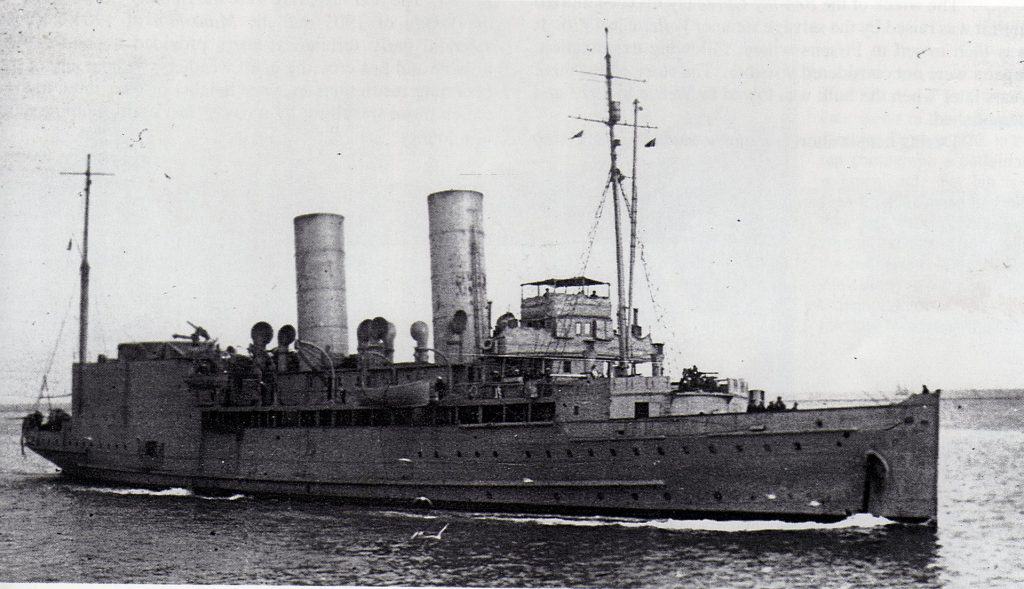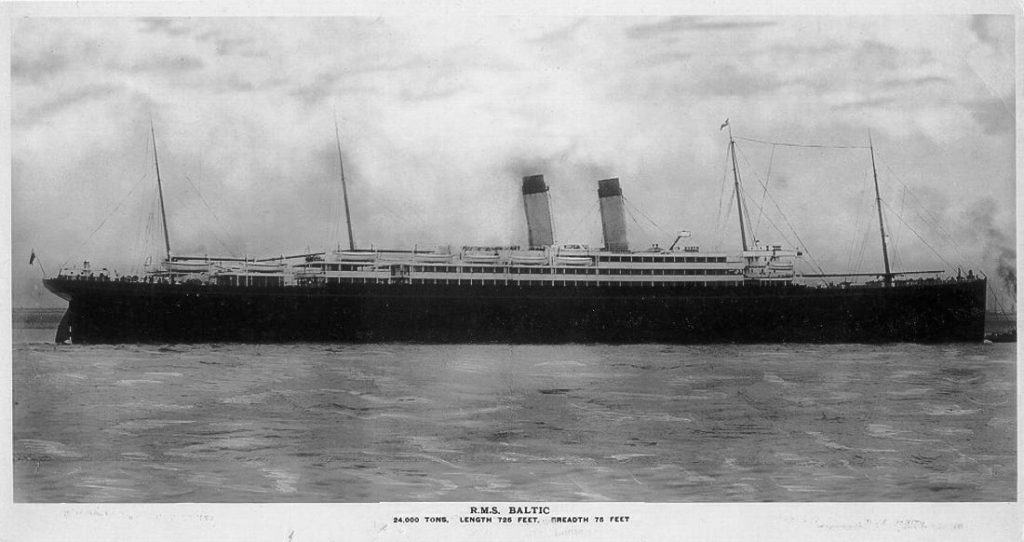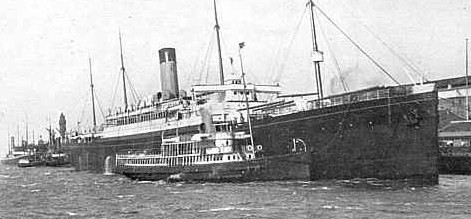Thank you to Brian Donaldson for the following research.
Ben-my-Chree

Ben-my-Chree was even larger and faster than her predecessor the Viking. She was 375 feet long (compared to 350ft), 2550 grt (compared to 1957 grt) and her engines developed 14,500shp (compared to 11,000shp). Her design speed was 24.5 knots, which was exceeded in service. Ben-my-Chree operated on the main Liverpool-Douglas route until the First War, when she was taken by the Admiralty in 1915 for conversion to a seaplane carrier, forming the prototype for later conversions, including the Viking. The conversion work was done at Cammell Laird, Birkenhead, and mainly consisted of the addition of a large hangar aft. She was also fitted with a dismountable launching platform forward, for seaplanes on trolleys. This was not successful, and so was removed. later conversions, starting with Viking, had a flat launching platform forward, to be used by landplanes. She subsequently operated various types of Short and Sopwith floatplanes.
Ben-my-Chree replaced the ex-SECR turbine Empress at Harwich in April 1915, and took part in operations off the German Coast. In June 1912 she replaced the Ark Royal at the Dardanelles, carrying Short Type 184s. On the 12th and 17th August, her Shorts carried out the world’s first aerial torpedo attacks. These were successful, but damage caused was not as substantial as claimed at the time. Ben-my-Chree (3) became the flagship of the East Indies & Egypt Seaplane Squadron at Port Said in January 1916, and was active in the area until 9th January 1917, when she was caught by Turkish artillery whilst in the harbour at Castelorizo, and was set on fire and sunk. The wreck was raised in 1921, towed to Piraeus, and subsequently scrapped in Italy. Ben-my-Chree was the only aviation vessel lost to enemy action in the First War.
SS Baltic

On 14 April 1912, Baltic sent an ice warning message to the RMS Titanic:”Greek steamer Athenia reports passing icebergs and large quantities of field ice today in latitude 41° 51′ N, longitude 49° 52′ W. Wish you and Titanic all success. Commander.”
In 1915:
- Feb. 6: arrived Liverpool from New York, several submarines sighted on the way
- Mar. 3: departed New York carrying war munitions and material consigned to the British Government. She also carried 145 passengers (Capt. J. B. Ranson)
- Mar. 24: her rudder was smashed as she was swung by the tide and bumped into a tug as she was leaving her dock to sail for New York – vent for repairs and was laid up in dry dock for several months
- July 15: departed New York with 193 aeroplanes, 92 automobiles and other war munitions for WW1
- July 26: arrived Liverpool from New York after having been chased by German submarine off Fastnet
http://www.norwayheritage.com/p_ship.asp?sh=balt2
SS Cymric

On 29th April 1916, loaded with cargo and with Captain Beadnell still in command, Cymric departed New York for Liverpool on what turned out to be her last ever voyage. Onboard were 112 people, all crew, except for, according to the New York Times, six passengers who were said to have been members of the British Consular service; other sources also mention there were five sailors returning home aboard the ship.
At 4pm (or 1.10pm) on 8th May 1916, while Sailing 140 miles West North West of Fastnet, Ireland, Cymric was suddenly, without any warning, torpedoed by the German submarine U20 – the very same submarine that had controversially sank the Lusitania almost exactly a year earlier. The torpedo exploded into the port side of her engine room, and then immediately caused the death of four members of her crew.
With the crew seemingly believing the ship was sinking faster than she was, the ship was evacuated; tragically during the evacuation Chief Steward KB Malcolm was killed, having said to have fallen into the sea and drowned.
With the ship sinking more slowly than seemingly expected, it seems at least some of the crew returned to the ship, and despite the ship having no power, it is said that the crew were able to send a wireless message for help using battery power. Cymric sunk during the early hours of the next day, at around 3.30am. The 107 survivors were rescued and taken to Bantry, Ireland.
Between 1914 and 1918 about 50 large oceangoing passenger steamships, converted to war purposes as floating hospitals and troop transports, were sunk in the Atlantic by the German navy, and SS Cymric came to be the thirty-seventh in the list.

